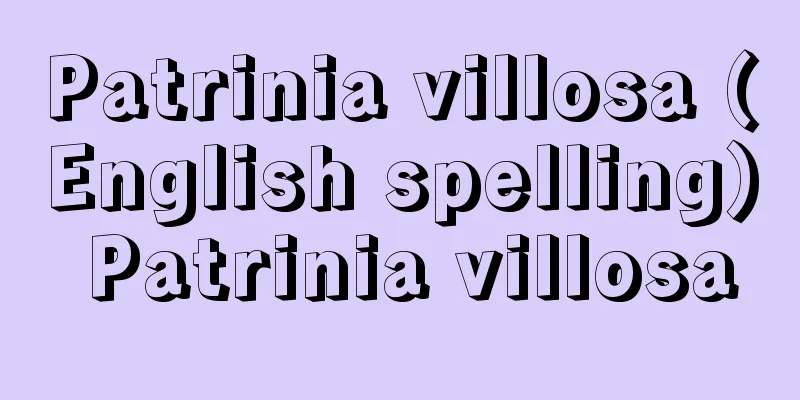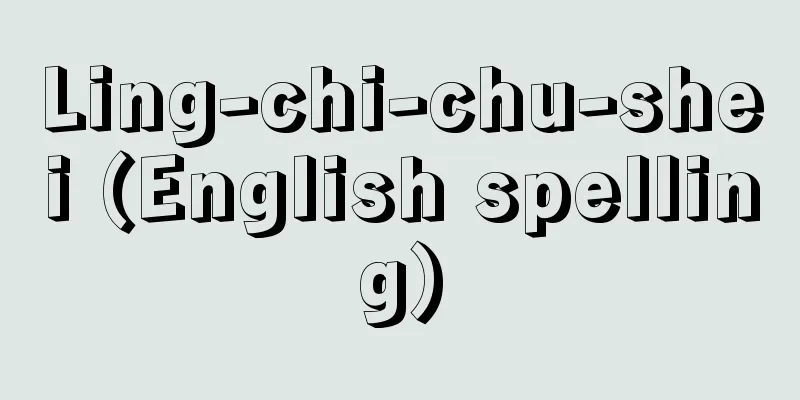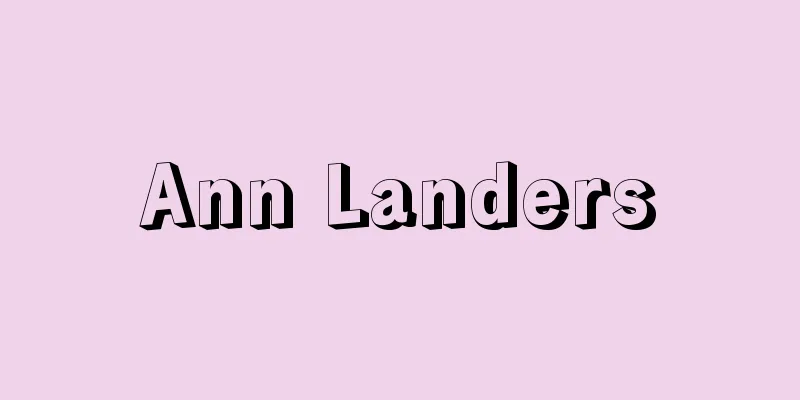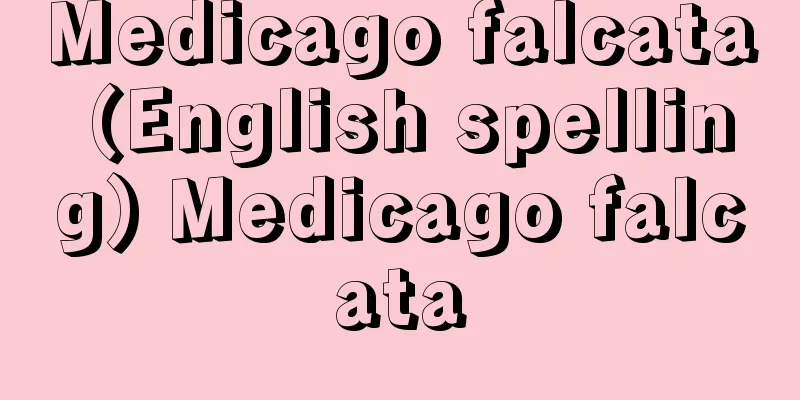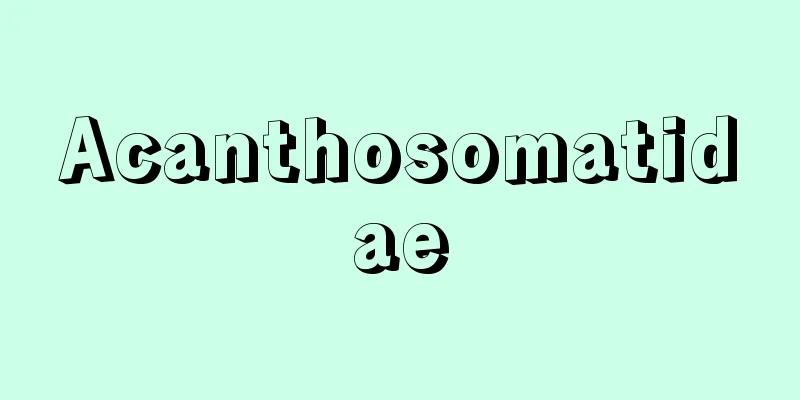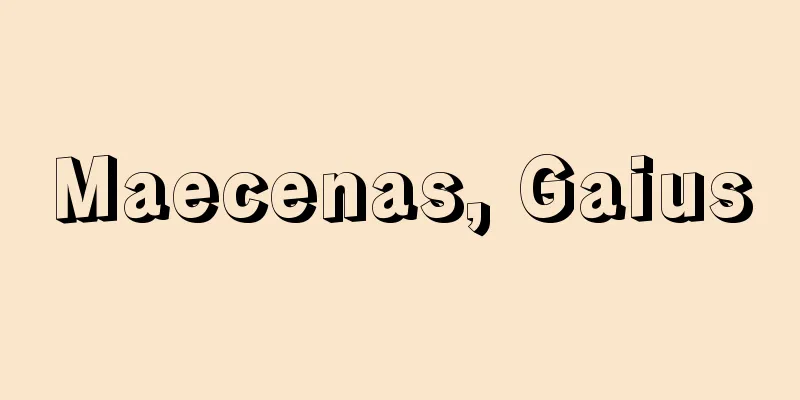Belgium - Kingdom of Belgium
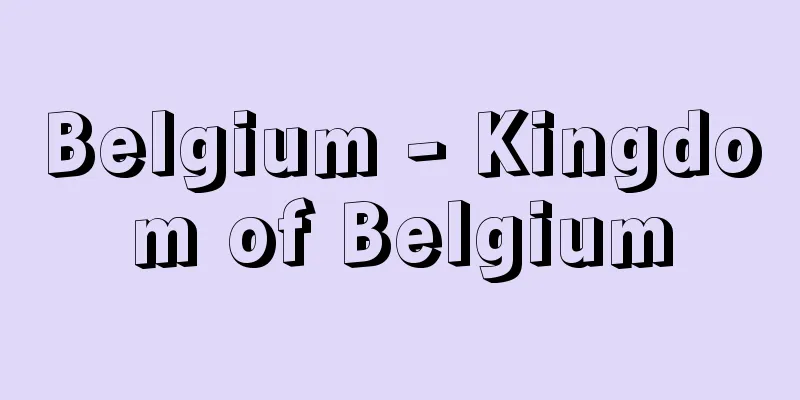
|
A constitutional monarchy in northwestern Europe. It faces the North Sea and borders the Netherlands to the north, Germany to the east, Luxembourg to the south, and France to the west. Its area is 30,528 square kilometers, and its population is 10,542,000 (2006 estimate), 10,750,000 (2009 estimate). The country's name is said to come from the Belgae, a sect of Celts who settled in the area during the Roman period. Because of its geographical location at the crossroads of Europe, it is a multi-ethnic state consisting of the Germanic Flemish people in the north and the Latin Walloons in the south. The Flemish people speak Flemish and the Walloons speak Walloon, but Flemish has almost the same grammar and orthography as Dutch, and Walloon, a dialect of French, has been assimilated into French today. Therefore, officially, Dutch and French are the languages used, and they are the official languages along with German in the east. The official name of the country is therefore Koninkrijk België in Dutch, Royaume de Belgique in French, and Kőnigreich Belgien in German. The capital is Brussels. It has long been a key transportation hub, but fell victim to the expansionism of the great powers and its affiliation changed rapidly. Today, it is a founding member of the EU (European Union) and NATO (North Atlantic Treaty Organization), and since the headquarters of both organizations are located in Brussels, it is the center of European integration and also a key player in the European expansion strategies of countries outside the EU. The national flag is a tricolor of black, yellow, and red, each of which represents strength, fulfillment, and victory, and was adopted from the colors of the coat of arms of the Duke of Brabant in 1831. The national anthem is also "La Brabançonne", which praises the province of Brabant. [Tamiko Kawakami] NatureIn terms of topography and geology, the country is broadly divided into three regions. (1) Northern Lowlands Sand dunes have developed along the coastline of about 65 km facing the North Sea, and inside these is a coastal plain up to 5 meters high, which forms the polder (reclaimed land) area. Further inland lies the sandy Flanders Plain, which is 5 to 50 meters above sea level. This plain stretches from northern France to the southern part of the Netherlands, and is part of the Scheldt River system, which originates in northern France. In the eastern part of the plain lies the Kempen Plateau, which is 50 to 80 meters above sea level, and the southern part of the plateau is the Kempen coalfield. (2) The Central Low Plateau is a fertile region of loess soil with undulating hills and hillsides at an altitude of 50 to 200 meters that connects to the south of the Flanders Plain. The Sambre River and the Meuse River, which originate in northeastern France, cut the plateau in a straight line from east to west, and in the river valley there are coal seams that stretch from northern France to Aachen in Germany. The south of the river valley is a hilly area with an altitude of 200 to 350 meters, and is made up of loess and sandy soil. (3) The Ardennes Plateau is an ancient mountain range made of Hercynian schist with an elevation of over 500 meters, forming an elevated peneplain. Botrange in the east is the highest point in the country at 694 meters. Belgian Lorraine, located south of the plateau, is 300 to 400 meters above sea level. It belongs to the west coast oceanic climate zone, and the influence of the westerly winds extends widely inland. The annual temperature range is small, but there is a large annual variation. The annual precipitation is about 800 mm in the plains and hills, and 1,200 to 1,500 mm in the Ardennes plateau. The average temperature in Brussels is 3.1°C in January and 17.9°C in July, and the annual precipitation is 823.0 mm. As the country is located at around 50 degrees north latitude, the days are short and gloomy in winter. [Tamiko Kawakami] GeographyIt is divided into three parts: Flanders, the Central Foothills and the Ardennes Plateau. [Tamiko Kawakami] FlandersIn the coastal areas, the dunes are being turned into farmland, and the polder is being used for pastures. There are also important maritime transportation sites such as Ostend and Zeebrugge, and the area is also a resort area. Due to the regional development policies after the Second World War and the energy revolution in the 1960s, the area developed from the suburbs of Antwerp, Belgium's first trading port and second most populous city, to the inland areas with their well-developed transportation networks, including canals and highways. Foreign capital from the United States and EU countries built factories in this area, producing petrochemicals, machine assembly, electronic devices, etc., and together with the large and small industrial complexes in the North Sea coastal area, this area has become the center of the Belgian economy, replacing the Sambre-Meuse valley in the south. Land improvement has progressed in the Flanders plain, and it is a small-scale intensive mixed agricultural area where horticultural crops such as vegetables and flowers, potatoes, sugar beets, and pig farming are cultivated. The region has a tradition of woolen textile manufacturing in the Middle Ages, but today the textile industries, such as cotton and chemical fibers in Ghent (Ghent), linen in Kortrijk, and carpet manufacturing in the northwest, are suffering from a slump. The Kempen Plateau in the east was once a heathland, but since the development of coalfields in the early 20th century, the zinc and other metal processing industries and the chemical industry have developed. Thanks in part to development investments by the government, foreign-owned automobile plants have set up shop along the Albert Canal, which connects Antwerp and Liège, making this a region of remarkable development. [Tamiko Kawakami] Central HillsThis region has been the center of the country's economic activity. The line connecting the capital and Charleroi to the south-southeast is an important industrial zone for textiles, metals, chemicals, and food processing. It is also the most fertile soil area, where wheat and sugar beets are produced, and greenhouse horticulture can be seen in the suburbs of the capital. The Sambre-Meuse valley is blessed with coal production and water transportation, and was the center of the first industrial revolution on the European continent. Since then, the steel, machinery, and glass industries have developed into the largest heavy industrial region in Belgium and one of the leading in Western Europe, with Liège and Charleroi at the center. However, after the closure of coal mines due to the energy revolution in the 1960s and the oil crisis in the 1970s, the inland location of these industries made it difficult for them to restructure, and the region has suffered from recession. Since 1984, with the assistance of the European Commission and the Belgian government, the Walloon government has established six science parks in collaboration with nine universities and research institutes in the region. Thanks to the encouragement of research and development and investment, and financial subsidies to companies, the region has developed in the fields of IT, biotechnology, and nanotechnology, and international biotechnology companies have also begun to set up base in the country. The Kondoro Hills region in the southern Meuse Valley is the country's largest agricultural region, and is mainly cultivated with rye and forage crops. [Tamiko Kawakami] Ardennes PlateauAbout half of the plateau is covered with coniferous forests, and because of the cool, humid climate and poor soil, there is little arable land, making it an area for dairy farming, beef cattle breeding, and forestry. Because of its topography, it has been a key transportation and military location since ancient times, and is dotted with fortresses and castles of nobles built from the Middle Ages to the 18th century. Combined with the vast forests, beautiful valleys, and traditional local cuisine, it has become an attractive tourist destination. [Tamiko Kawakami] historyAlthough it was established as an independent state only in 1831, it is a region with a long history, where a Celtic tribe lived in ancient times. During the Roman era, it was conquered by Caesar in 57 BC, and as the province of Belgica, it was Romanized and Christianity was introduced. With the fall of the Roman Empire, Germanic peoples moved to the north and used Flemish, while people who spoke Walloon, a Romance language, moved to the south. Thus, the distribution of ethnic groups and languages that was established around the 4th century AD has remained almost unchanged to this day. In the 12th and 13th centuries, when long-distance trade flourished due to the Crusades, Walloon metalworkers and Flemish woolen weavers gained the power to oppose feudal lords through guilds, autonomous cities developed, and some even joined the Hanseatic League. Eventually, conflicts continued within the cities and between cities and rural areas, and Flemish craftsmen emigrated to England, and the center of the woolen industry moved. From the end of the 14th century to the 15th century, the power of the Duke of Burgundy in France extended to the area that is now Belgium. It is said that the foundations of national unity were established under his rule, and this was the period when Belgium prospered most economically and culturally. After that, as a result of the power struggles between the great powers and the marriages and inheritances of the rulers, Belgium passed through the rule of Spain and Austria (House of Habsburg), and in 1795 came under the occupation of the French Revolutionary government army. After the fall of Napoleon I, the country was annexed to the Netherlands as part of the Kingdom of the Netherlands at the Congress of Vienna. However, King William I of the Netherlands ruled with an extreme preference for the Northern Netherlands, and the people of the south feared that the strengthening of royal power would lead to interference in the Catholic Church, and resentment grew. In the midst of this, the July Revolution (1830) occurred in France, and citizens influenced by it rioted in Brussels, and the movement to destroy factories spread throughout the country, but the government was powerless to quell this, and the propertied citizen militia restored order and took control. The Dutch king tried to suppress the revolt by force, but the southerners repelled the royal army, declared Belgium independent, and appointed Leopold of the German House of Saxe-Coburg as king. At the London Conference of 1831, Belgium's independence and permanent neutrality were recognized by the great powers. It was not until 1839 that the Dutch signed the final agreement. After independence, around 1840, Belgium achieved the first industrial revolution in continental Europe, becoming one of the leading industrial nations in Europe. From around the 1870s, it expanded into Russia, Egypt, China, Mexico, etc., through railway construction and steel manufacturing. Meanwhile, in 1885, as part of the race to acquire colonies among the great powers at the time, King Leopold II acquired the Congo Free State (Belgian Congo, later the Republic of the Congo, Democratic Republic of the Congo, Republic of Zaire, and in 1997 the country's name changed to Democratic Republic of the Congo) in his personal capacity, which was about 70 times the size of his home country. When problems arose with the king's colonial management, the Congo was transferred to the Kingdom of Belgium in 1908, and Société Générale bank and the copper and cobalt development company Union Minière (name changed to Umicore in 2001) entered the country, bringing great profits to the home country for about half a century until the Republic of the Congo (the country's name at the time of independence) was recognized in 1960. The policy of permanent neutrality at the time of the country's founding was ignored by the German army during both world wars. In 1948 after the Second World War, the pre-war customs union with Luxembourg was further developed into the Benelux Customs Union. Despite the difficulties of ethnic conflict and economic reconstruction within the country, it played an active role in the series of Western European integrations such as the ECSC (European Coal and Steel Community), EEC (European Economic Community), EC (European Community), and EU (European Union), and participated widely in other international organizations, walking the path of international cooperation. [Tamiko Kawakami] PoliticsThe political system is a constitutional monarchy based on a constitution that was enacted in 1831 and has undergone several amendments, but after 23 years and four constitutional amendments since 1970, it became a "federal state made up of communities and regions" in 1993. It is a constitutional monarchy with the King as head of state. A 1991 constitutional amendment made the position of King hereditary, with Albert II ascending to the throne in 1993. The King shares power with both the House of Councillors and the House of Councillors, cannot exercise power without the consent of the Ministers, and acts as an impartial arbitrator. The federal government is made up of 15 ministers. It had powers over the judicial system, monetary policy, finances, social security, welfare, the military, police, nuclear administration, and foreign affairs, but in 2001 a bill was passed to transfer most of these powers to the regions. The federal parliament is bicameral, with the lower house having stronger powers than the senate. The lower house is made up of 150 members directly elected by universal suffrage. The senate is made up of a complex composition of 71 members, and serves as the main forum for dialogue between the linguistic communities. The linguistic "community governments" established at the request of the Flemish people are made up of the Dutch, French, and German communities. Each community has powers over culture, education, the media, the medical system (excluding health insurance), and has a directly elected parliament and executive branch. The "regional governments" established at the request of the Walloons are made up of three: Flanders, Brussels-Capital Region, and Wallonia. They have powers over regional development, urban planning, environmental protection, employment, agriculture, energy policy (excluding nuclear power), and public works. In Flanders, the community government and the regional governments have been merged (the Flemish Union) and are run by one parliament and one executive branch with common responsibilities. In terms of political party activity, in Flanders there are the Christian Democrats, the Socialist Party, the Party for Freedom and Progress, and Vlames-Belung (Interests of Flanders), in Wallonia there are the Socialist Party, the Christian Democrats, the Party for Freedom and Progress, and the environmentalist Ecolo, and in the Brussels region there are the above parties as well as the Francophone Democratic Front. The judicial branch consists of 236 magistrate courts in the petty judicial districts, 26 courts of first instance, the High Circuit Courts of the 10 cantonal capitals, the Courts of Appeal in Brussels, Ghent and Liège, and the Court of Cassation as the highest judicial authority. The country is divided into 10 cantons, with the king appointing the cantonal governor. The cantonal assembly is made up of members elected by proportional representation for four-year terms. At the lowest level of the local government are communes (equivalent to cities and towns), which have traditionally had strong autonomy. There were once 2,586 communes, but these were consolidated to 589 in a merger in 1977. France aims to ensure security and improve its own status through cooperation with countries with which it has diplomatic and consular relations, and has made cooperation with Western European countries and the promotion of European integration through the EU and NATO systems its priority policy. In December 2009, former Prime Minister Herman Van Rompuy (1947- ) was inaugurated as the EU President (permanent president of the European Council), which was newly established by the new EU Basic Treaty (Lisbon Treaty). Although there were difficult periods in relations with the former colony, the Democratic Republic of the Congo, and the former trust territories of Rwanda and Burundi due to conflicts before and after independence, France has maintained strong ties with them through financial and technical cooperation for development, and a research and training scholarship system. In recent years, France has also adopted a policy that places importance on emerging Asian countries. As the basis of national defense, France places importance on collective security, due to its history of occupation during the two world wars. After the withdrawal of NATO forces from France, in 1967, the secretariat was moved to Brussels and the Supreme Commander was located near Mons, and France has played a central role in the defense of Western Europe. The total number of troops is about 38,800, including 14,300 in the Army, 1,600 in the Navy, 7,300 in the Air Force, 1,900 in the Medical Service, and 13,700 in the Joint Forces (2009). Conscription was abolished in 1994. The country actively participates in UN peacekeeping operations. [Tamiko Kawakami] Economy and IndustryOnce blessed with coal resources, the Meuse coalfields, with their high coal production costs, were closed one after another as part of the rationalization policy following membership in the ECSC. The country is dependent on foreign sources of energy at 76%, with the energy consumption structure consisting of 40% petroleum, 36.2% gas, 12.6% coal, and electricity and others (2005). The steel industry was once the core of the country's industry, but production has declined due to rising energy costs, a decline in global demand, competition from other countries, and high labor costs. Major industrial products include metal products, machinery, food, chemical products, textiles, glass, furniture, steel, and printing and publications. The proportion of people employed in the secondary industry was 23.9% (2006), and the unemployment rate, mainly among workers in this sector, is high at 7.0% (2008). Approximately 28.7% of the country's land area is used for agriculture (17.2% of which is ranches and pastures), and approximately 22.1% is forest. The proportion of people employed in the primary industry is 2.0% (2006), a low percentage of the national economy. Structural improvement projects have encouraged rationalization and the expansion of management scale, but with only 22 hectares of farmland per agricultural worker (2006), the country has one of the highest numbers of small and medium-sized self-employed farmers among EU countries. However, productivity is high, and the food self-sufficiency rate is approximately 80%. The main products are sugar beets, potatoes, pork, dairy products, and flax, with bulbs and flower seedlings being important exports. The country's trade is processing trade, with exports as a percentage of gross domestic product (GDP) (export dependency) at 95% and imports at 91% (2007), making it one of the most trade-dependent countries in the world. In 2007, exports were $430,779 million and imports $413,163 million. The country's main exports are automobiles, pharmaceuticals, chemicals, general machinery, steel, and diamonds, while its main imports are automobiles, pharmaceuticals, chemicals, general machinery, electrical machinery, and diamonds. The diamond industry in particular is dominated by Jews, with around 70% of the world's rough diamonds traded in Antwerp, where they are polished using advanced technology developed by the country. The country's trading partners are the EU countries, mainly Germany, the Netherlands, France, and the UK, as well as the US. The currency unit is the euro. GDP is $454.58 billion (2007). The budget deficit has been increasing rapidly since 1975, and as a condition for joining the European Economic and Monetary Union (EMU) in January 1999, the budget deficit had to be reduced to 3% or less of gross domestic product, leading to the implementation of fiscal policies such as reductions in social security expenses and industrial subsidies, and increased taxation. The average annual economic growth rate from 2004 to 2008 was 2.3%. The first railway in continental Europe was built between Brussels and Mechelen in 1835, and the density of the railway network was one of the highest in the world at its peak in 1950. The lines were reduced due to rationalization, and it has been nationalized since 1926. In addition, it is very convenient to connect major cities in Western Europe, such as from Brussels to Paris in about 1.5 hours by TGV (France's ultra-high-speed train, which is expanding its railway network both domestically and internationally), and to London in about 2 hours and 20 minutes by Eurostar train via the Channel Tunnel. Inland waterways were constructed from the end of the 19th century, mainly around the Scheldt River in the north and the Meuse River in the south, and played a major role in the development of inland industrial areas. The total length is 1,560 km (1984), and about 20% of it is navigable by ships of 1,000 to 1,500 tonnes. The road network also developed rapidly after World War II, and with the development of the EU, international highways linking major cities in neighboring countries and connecting domestic highways have expanded. As for airlines, Sabena Belgian Airlines, in which the Belgian government and Swissair had capital participation, operated international routes, but in 2001 Swissair went bankrupt due to its worsening management. In 2002, a private successor company, SN Brussels Airlines, took over some of the aircraft and routes and began operations. In 2007, SN Brussels Airlines merged with Virgin Express to become Brussels Airlines. The airline operates flights to approximately 50 cities in Europe and 14 cities in Africa (2009). [Tamiko Kawakami] societyThe population is composed of 57.9% Dutch-speaking (Flemish) in the north, 31.8% French-speaking (Walloon) in the south, 9.6% bilingual in the capital region, and 0.7% German-speaking in the east, which was ceded by Germany after World War I (2003). The population growth rate is high in the north and stagnant in the south. Today, Dutch, French, and German are the three official languages, and all government publications, including banknotes, are written in both Dutch and French. However, at the time of independence, although Dutch (Flemish) and French (Walloon) were recognized as equal languages in the constitution, French was de facto the official language because the south was dominant in terms of population and economic power at the time. After that, there was a persistent movement by people in the north to have Flemish officially recognized, and Dutch (Flemish) was also made an official language in 1898. The language issue continued and intensified from the 1950s. After the 1963 Language Act created three language regions, constitutional amendments from 1967 to 1971 created four language regions: Dutch, French, German, and the bilingual region of the capital, Brussels (Brussels is located in the Dutch-speaking region, but the number of French-speaking residents is increasing due to its capital function and economic activity). Parliament also granted autonomy in the cultural and educational administration of each language region to each cultural council, composed of members of both houses of parliament. In 1968, the French-speaking department of the Catholic University of Leuven, founded in 1425, was separated and moved to the French-speaking region south of the capital. In 1978, the constitution was amended again to give greater autonomy to the three regions of Flanders (Dutch-speaking region), Wallonia (French-speaking region), and Brussels-capital region. A federal system was then established in 1993, giving considerable power to linguistic and regional communities, and various efforts have been made to resolve ethnic conflicts, but these have been extremely difficult and political instability continues. The economic and cultural standards of the people are high, but since the 1970s, growth has stagnated due to the economic recession, and the comprehensive social welfare systems that were enacted in 1944 have been reviewed in the wake of the country's financial difficulties. Since 1914, education has been compulsory from 6 to 14 years old, but in 1983 it was changed to 6 to 18 years old. There are public schools and private schools, mainly Catholic schools, and the two sides have been in conflict over secularization of education and state subsidies, but since 1958 subsidies have been equalized. Secondary education institutions are diversifying. Institutions of higher education include national universities such as Ghent, Liège, Mons, and Antwerp, and private universities such as Leuven Catholic, Brussels Free, and Antwerp, as well as many national and private single-discipline universities. In terms of religion, about 80% of the people are Catholic, with the rest being Protestants, Jews, Muslims, etc. [Tamiko Kawakami] cultureHistorically, it is often considered to be the same as the Netherlands or France, but because it has a historical climate dating back to Roman times and is a point of contact between the Latin and Germanic peoples, the cultures of both are layered and rich in depth and diversity. The national character of the Netherlands, regardless of whether they are of Dutch or French descent, is hardworking, respects common sense, has a strong sense of independence, and is sensitive to the arts. During the Middle Ages, the city prospered, and wealthy merchants and aristocrats patronized it, producing such painters as Van Eyck, Memling, Bruegel, and Rubens, known as the Flemish painters. It also produced many excellent buildings, such as churches, city halls, and art guilds. In the field of science and technology, Vesalius, known as the father of modern anatomy in the 16th century, and the cartographer Mercator are also notable. After independence, notable figures include Knopff, Ensor, Delvaux, and Magritte in the field of art, Horta, known as the father of Art Nouveau, Maeterlinck, who won the Nobel Prize in Literature, Empress Elisabeth, who worked hard to establish the Queen Elisabeth International Music Competition, which is considered one of the three major music competitions in the world today, and Father Peel, who received the Nobel Peace Prize for his work in refugee relief after World War II. There are two major daily newspapers, one in Dutch and one in French, both of which are strongly aligned with political parties. In addition, there is one German-language newspaper and many local newspapers that reflect the local culture. Television and radio broadcasting is mainly provided by the national broadcasting service, but since 1977 three language regions have been separated and are broadcasting in each language. [Tamiko Kawakami] Relations with JapanDiplomatic relations between Japan and Belgium began with the signing of the Treaty of Amity, Commerce and Navigation in 1866 (Keio 2), but it was after World War II that relations between the two countries became closer. Since the launch of the EC, Japanese machinery manufacturers and trading companies, including those producing automobiles, have been active in the EC as a key part of the EC's strategy towards Europe, with 152 companies (2008) operating there. The value of trade between the two countries is not significant for either country, but Belgium's exports to Japan were 227.36 billion yen, while Japan's imports were 929.347 billion yen (2007), resulting in a large import surplus for Belgium. Japan's main exports include general machinery, electrical equipment, passenger cars and automotive parts, while Japan's main imports include pharmaceuticals, diamonds, electrical equipment, food (chocolate, beer) and organic compounds. [Tamiko Kawakami] "World History 7: Central European History" edited by Imaki Rikuro (1971, Yamakawa Publishing)" ▽ "World Geography 7: Europe II" edited by Kiuchi Shinzo (1977, Asakura Publishing)" ▽ "Labor-Management Relations in Japanese Companies in Belgium" by Hanami Tadashi and J. De Ramoye (1979, Japan Labor Association)" ▽ "Modern World History 21: Modern Benelux History" by Kurihara Fukuya (1982, Yamakawa Publishing) ▽ "Trade Market Series 260: Belgium" edited and published by the Japan External Trade Organization (1985) ▽ "Belgian Art" by C. Siarre, translated by Tani Masachika (1985, Dohosha Publishing)" ▽ "History of Japan-Belgium Relations" by Isomi Tatsunori, Kurosawa Fumitaka, and Sakurai Yoshiki (1989, Hakusuisha Publishing)" ▽ Bruegel's "Children's Games" by Mori Yoko (1989, Miraisha) ▽ Miyashita Naoko's Belgium on a Sunny Day (1994, Maruzen) ▽ Kurihara Fukuya's Holland and Belgium (1995, Shinchosha) ▽ Georges-Henri Dumont's History of Belgium, translated by Murakami Naohisa (1997, Hakusuisha) ▽ Tamai Yoshiko and Shino Toshiyuki's A Short Journey Through Belgium (1997, Tokyo Shoseki) ▽ Shimojo Michihiko's Administrative Culture of the Benelux Countries: Holland, Belgium, and Luxembourg (1998, Waseda University Press) ▽ Morita Yasukazu (ed.), History of Switzerland and the Benelux: New Edition of World History 14 (1998, Yamakawa Publishing) ▽ Yamada Masahiko's The Emergence of Medieval Flemish Cities "Local Society and Circulation of Goods" (2001, Minerva Shobo)" ▽ "The Formation of Medieval Cities in Northwest Europe" by A. Fürfurst, translated by Yoshiki Morimoto, Tamiko Fujimoto, and Takako Mori (2001, Iwanami Shoten)" ▽ "The Middle Ages in Europe from a Regional Perspective: Cities, Commerce, and Mentality in Medieval Belgium" by André Joris, supervised translation by Yoshio Sehara, translated by Norio Moriyama et al. (2004, Minerva Shobo)" ▽ "The Construction of Europe and Belgium: A Study of the Social and Economic History of Integration" by Ken Kojima (2007, Nihon Keizai Hyoronsha) [References] | | |Antwerp| | | | | | | | | | | | | | | | | | | | | | | | | [Supplementary material] |"> Belgium flag ©Shogakukan Illustration/Shogakukan Creative "> Belgium Location Map ©Shogakukan "> Belgian linguistic regions A large square in Brussels, the capital of Belgium. It is surrounded by magnificent buildings such as the 15th century city hall (left) and the guild houses (right back). World Heritage Site "Grand Place of Brussels" (Belgium, registered in 1998) Belgium Brussels ©Shogakukan "> Grand Place Built by order of Charles V in the 16th century, it was rebuilt in the 19th century in a neo-Gothic style. It was once used as the governor's office and a prison. It is now the city museum. Part of the World Heritage Site "Grand Place of Brussels" (Belgium, registered in 1998) Belgium Brussels ©Shogakukan "> The King's House (Brussels City Museum) The guild houses surround the Grand Place, where a market was once located. Built in the 17th and 18th centuries, the buildings of trade guilds such as bakers, tailors, and butchers remain. Part of the World Heritage Site "Grand Place of Brussels" (Belgium, registered in 1998) Belgium Brussels ©Shogakukan "> Guild House Brick buildings remain on both sides of the canals that run through the city, giving it the appearance of a typical medieval city. Part of the World Heritage Site "Historic Center of Bruges" (Belgium, registered in 2000) Belgium Bruges ©Shogakukan "> Canals of Bruges Source: Shogakukan Encyclopedia Nipponica About Encyclopedia Nipponica Information | Legend |
|
北西ヨーロッパの立憲君主国。北海に面し、北部をオランダ、東部をドイツ、南部をルクセンブルク、西部をフランスに接している。面積3万0528平方キロメートル、人口1054万2000(2006年推計)、1075万(2009年推計)。国名は、ローマ時代にこの地に定住していたケルト人の一派ベルガエに由来するといわれる。ヨーロッパの十字路にあたる地理的位置のため、大別すると、北部はゲルマン系民族のフラマン人、南部はラテン系民族のワロン人からなる複合民族国家である。フラマン人はフラマン語、ワロン人はワロン語を用いるが、フラマン語はオランダ語と文法や正書法がほぼ同じであり、またフランス語の一方言であるワロン語も今日ではフランス語に同化されているため、公式にはオランダ語とフランス語が使用言語で、東部のドイツ語とともに公用語となっている。したがって、国名の正称ベルギー王国は、オランダ語でKoninkrijk België、フランス語でRoyaume de Belgique、ドイツ語でKőnigreich Belgienとなる。首都はブリュッセル。 古くから交通の要地であるが、列強の拡張主義の犠牲となり、帰属がめまぐるしく変化した。今日では、EU(ヨーロッパ連合)およびNATO(ナトー)(北大西洋条約機構)の原加盟国であり、両組織の本部がブリュッセルに設置されているため、ヨーロッパ統合の中心地となっており、またEUの域外諸国のヨーロッパ進出戦略の要(かなめ)ともなっている。 国旗は黒、黄、赤の三色旗で、それぞれの色は力、充実、勝利を意味し、1831年ブラバン公の紋章の色から採用された。国歌もブラバン州をたたえる『ラ・ブラバンソンヌ』La Brabançonneである。 [川上多美子] 自然地形・地質的には、国土は大きく三分される。 (1)北部低地 北海に面する約65キロメートルの海岸には砂丘が発達し、その内側には高度5メートルまでの海岸平野があり、ポルダー(干拓地)地域となっている。さらに内陸には、標高5~50メートルの砂質のフランドル平野が広がる。この平野は北フランスからオランダ南部に連なるもので、北フランスに発するスヘルデ川(スケルデ川)の水系に属する。また平野の東部には標高50~80メートルのケンペン台地があり、台地の南部はケンペン炭田となっている。 (2)中部低位台地 フランドル平野の南につながる標高50~200メートルの波状の起伏のある黄土質の肥沃(ひよく)な地域である。北東フランスに発するサンブル川、ムーズ川(マース川)がこの台地を東西に直線的に切断しており、この河谷には北フランスからドイツのアーヘンに延びる石炭層がある。河谷の南は標高200~350メートルの丘陵地帯で、黄土と砂質土からなる。 (3)アルデンヌ高原 標高500メートル以上のヘルシニア山系片岩質の古期山地で、隆起準平原となっている。東部のボトランジュはこの国の最高点で694メートル。高原の南のベルギー領ロレーヌは標高が300~400メートルとなる。 西岸海洋性の気候区に属し、偏西風の影響が内陸に広く及ぶ。気温の年較差は少なめであるが、年変異は大きい。年降水量は平野・丘陵部で800ミリメートル、アルデンヌ高原で1200~1500ミリメートル程度。ブリュッセルの平均気温は1月3.1℃、7月17.9℃で、年降水量は823.0ミリメートルである。国土が北緯50度前後に位置するため、冬は日が短くどんよりと薄暗い日が多い季節となる。 [川上多美子] 地誌フランドル、中部丘陵地帯、アルデンヌ高原の三つに分けられる。 [川上多美子] フランドル海岸部は砂丘の耕地化が進み、ポルダーは牧場化されている。オーステンデ、ゼーブルッヘのような海上交通の要地もあり、海浜の保養地域ともなっている。第二次世界大戦後の地域開発政策や1960年代のエネルギー革命の影響で、ベルギー第一の貿易港で第二の人口を抱えるアントウェルペン(アントワープ)の郊外から、運河や高速道路など、交通網の発達した内陸部にかけての地域が発展した。この地域に、アメリカやEU諸国などの外国資本が石油化学、機械組立て、電子機器などの工場を建設し、北海臨海地域の大小工業団地とともに新たな工業地域として、いまでは南部のサンブル・ムーズ河谷にかわってベルギー経済の中心地域となっている。フランドル平野部は土地改良が進み、野菜、花などの園芸作物やジャガイモ、テンサイの栽培、養豚などの小規模集約的混合農業地域である。中世の毛織物工業の伝統がある地域だが、今日ではヘント(ガン)の綿および化学繊維、コルトライクの麻、北西部のじゅうたん製作などの繊維工業は不況に苦しんでいる。東部のケンペン台地はかつてヒースの茂る荒地であったが、20世紀初頭の炭田開発以来、亜鉛などの金属加工業や化学工業が発達した。政府の開発投資もあり、アントウェルペンとリエージュを結ぶアルベール運河沿いに外資系自動車工場などが進出し、発展の目覚ましい地域である。 [川上多美子] 中部丘陵地帯この国の経済活動の中心部をなしてきた地域である。首都と南南東のシャルルロアを結ぶ線上は、繊維、金属、化学、食品加工の重要な工業地帯をなしている。またもっとも肥沃な土壌地域で、小麦、テンサイの生産や首都近郊では温室園芸がみられる。サンブル・ムーズ河谷は石炭産出と水運に恵まれ、ヨーロッパ大陸最初の産業革命の中心地となった。以来、製鉄、機械、ガラス工業などがリエージュやシャルルロアを中心としてベルギー最大、西ヨーロッパ有数の重工業地域として発達してきた。しかし、1960年代のエネルギー革命による炭鉱の閉山や1970年代の石油危機以降、これら業種の内陸立地の不利化で構造転換を迫られ、不況に苦しんできた。1984年以降、ヨーロッパ委員会やベルギー政府の援助を受け、ワロン地域政府は域内9大学や研究機関と連携する六つのサイエンスパークを創設した。研究開発や投資の奨励、企業への財政補助などにより、IT、バイオ、ナノテクノロジー等の分野で発展し、国際的バイオ企業も進出するようになった。ムーズ河谷南部のコンドロ丘陵地帯は国内でもっとも大規模経営の農業地域で、ライムギや飼料作物栽培が中心である。 [川上多美子] アルデンヌ高原高原の約半分は針葉樹林で覆われ、冷涼・湿潤な気候でやせ地のため耕地は少なく、酪農、肉牛飼育、林業地域となっている。地形的に古代より交通・軍事の要衝であるため、中世から18世紀にかけて建設された要塞や貴族の城館が点在している。広大な森や渓谷美、伝統的な郷土料理とあわせ魅力的な観光地となっている。 [川上多美子] 歴史独立国家としての成立は1831年と新しいが、古い歴史のある地域で、古代にはケルト人の一派が居住していた。ローマ時代には、紀元前57年カエサルに征服され、属州ベルギカとしてローマ化が進み、キリスト教が伝えられた。ローマ帝国の滅亡とともに、ゲルマン人が北部に住むようになってフラマン語を使用し、ロマンス語系の一つワロン語を話す人々は南部に居住するようになった。こうして紀元後4世紀ごろ成立した民族と言語の分布は、ほぼ変化することなく今日に至っている。十字軍をきっかけとして遠隔地貿易が盛んになる12~13世紀には、ワロン人の金属工、フランドルの毛織物工たちがギルドを通じて封建領主らと対抗する実力を得、自治都市が発達し、ハンザ同盟に参加するものも出現した。やがて都市内部、都市と農村の対立などで紛争が続き、フランドルの職工たちはイギリスに移住し、毛織物工業の中心は移動する。14世紀末から15世紀にかけて現在のベルギーの地にフランスのブルゴーニュ公の力が伸びてくる。この支配下で国としてのまとまりの基礎ができたといわれ、経済的、文化的にベルギーの地がもっとも繁栄した時代であった。その後、列強の勢力争いや支配者たちの結婚・相続などの結果、スペイン・オーストリア(ハプスブルク家)の支配を経て、1795年フランス革命政府軍の占領下に入った。ナポレオン1世失脚後のウィーン会議で、ネーデルラント王国の一部としてオランダに併合された。だがオランダ国王ウィレム1世は極端な北部ネーデルラント優先主義の統治をし、また王権の強化がカトリック教会への介入につながることを南部の人々は恐れ、反発が強まっていった。このなかで、フランスに七月革命(1830)が起こるとその影響を受けた市民がブリュッセルで暴動を起こし、工場打ち壊し運動も全国に広まるが、政府にはこれを鎮める力がなく、有産市民軍が治安を回復し、実権を握るに至った。これに対しオランダ国王は武力による鎮圧を試みたため南部の人々は王軍を撃退し、ベルギーの独立を宣言、ドイツのザクセン・コーブルク(サックス・コバーグ)家のレオポルドを国王に迎えた。1831年ロンドン会議で、ベルギーの独立と永世中立が列強によって承認された。オランダが最終取り決めに調印したのは、ようやく1839年になってからである。 独立後の1840年ごろには、ヨーロッパ大陸で最初に産業革命を達成し、ヨーロッパ有数の工業国となった。1870年代ごろからは、ロシア、エジプト、中国、メキシコなどに、鉄道建設、製鉄工業などで進出した。一方、1885年には、当時の列強の植民地獲得競争のなかで、国王レオポルド2世は個人の資格で本国の約70倍の面積をもつコンゴ自由国(ベルギー領コンゴ、のちにコンゴ共和国、コンゴ民主共和国、ザイール共和国、1997年からコンゴ民主共和国と国名が変化)を領有した。王の植民地経営に問題が生じると、1908年コンゴはベルギー王国に移管され、ソシエテ・ジェネラル銀行や銅・コバルト開発会社ユニオン・ミニエール社(2001年ユミコアに社名変更)などが進出し、1960年のコンゴ共和国(独立時の国名)独立承認まで約半世紀、本国に多くの利益をもたらすこととなった。 建国時の永世中立政策は二度の世界大戦でドイツ軍に無視された。第二次世界大戦後の1948年には、戦前のルクセンブルクとの関税同盟をベネルックス関税同盟としてさらに発展させた。国内的に民族対立の難題や経済再建の問題を抱えつつも、ECSC(ヨーロッパ石炭鉄鋼共同体)、EEC(ヨーロッパ経済共同体)、EC(ヨーロッパ共同体)、EU(ヨーロッパ連合)など一連の西ヨーロッパ統合に積極的役割を果たし、その他の国際機構にも広く参加し、国際協調の道を歩んできた。 [川上多美子] 政治政治制度は、1831年に制定され数次の改正を経た憲法に基づく立憲君主制であるが、1970年以来、23年間の年月と4回の憲法改正を重ねて、1993年に「共同体と地域からなる連邦国家」となった。国王を元首とする立憲君主制の連邦国家である。国王は1991年の憲法改正で男女による世襲制となり、1993年にアルベール2世が即位した。王は上下両院と権力を分担し、大臣の同意なしには権力の行使ができず、公平なる仲裁人の役割を果たす。 連邦府は最高15人の大臣からなる。司法制度、通貨政策、財政、社会保障、福祉、軍隊、警察、原子力行政、外交などの権限を有していたが、2001年そのほとんどを地域に移管する法案が成立した。連邦議会は二院制で、下院が上院より強い権限をもつ。下院は普通選挙で直接選出される150人の議員からなる。上院は複雑な構成の71人の議員からなり、言語共同体間の主要な対話の場となっている。フラマン人の要求から成立した言語別の「共同体政府」はオランダ語共同体、フランス語共同体、ドイツ語共同体からなる。それぞれの共同体は文化、教育、報道、医療制度(健康保険は除く)などに関する権限をもち、直接選挙による議会と行政府をもつ。またワロン人の要求で成立した「地域政府」はフランデレン、ブリュッセル首都圏、ワロンの三つからなる。地域開発や都市計画、環境保護、雇用、農業、エネルギー政策(原子力を除く)、公共事業などの権限をもつ。フランデレンでは共同体政府と地域政府が合併(フランデレン統合共同体)し、両者に共通の責任をもつ一つの議会と一つの行政府で運営されている。 政党活動は、フランデレン地域においてはキリスト教民主党、社会党、自由進歩党、フラームス・ベラング(フランダースの利益)などが、ワロン地域では社会党、キリスト教民主党、自由進歩党、環境保護派のエコロなどが、ブリュッセル地域にはこれらの諸政党に加え、仏語派民主戦線がある。 司法機関は、236の小司法区の治安裁判所、26の第一審裁判所、10の州都の高等巡回裁判所、ブリュッセル、ヘント、リエージュの控訴院、最高機関としての破毀(はき)院から構成されている。 全国は10州に分かれ、州知事は国王が任命する。州議会は比例代表制によって選出された4年任期の議員で構成される。自治体の最下部に、伝統的に強い自治権をもつコミューヌ(市町村にあたる)があり、かつて2586を数えたが、1977年の合併で589に統合された。 外交・領事関係を結ぶ各国との協調による安全保障の確保と自国の地位の向上を目ざしており、EUおよびNATO体制を通じて、西ヨーロッパ各国との協力とヨーロッパ統合の推進を重点政策としている。2009年12月、EU新基本条約(リスボン条約)により新設されたEU大統領(ヨーロッパ理事会常任議長)に元首相ファン・ロンパウHerman Van Rompuy(1947― )が就任した。旧植民地のコンゴ民主共和国、旧信託統治地域であったルワンダとブルンジに対しては、独立前後の紛争で困難な関係の時期もあったが、開発のための資金・技術協力、研究・実習奨学資金制度によって強い結び付きを保っている。また近年、アジア新興国も重視する政策をとるようになった。国防の基礎としては、二度の世界大戦で占領された経過から集団安全保障を重視している。フランスからのNATO軍撤退後は、1967年に事務局をブリュッセルに、最高司令部をモンス近郊に迎え、西ヨーロッパ防衛の中心地的役割を担っている。総兵力は約3万8800、うち陸軍1万4300、海軍1600、空軍7300、医療1900、統合軍1万3700(2009)。1994年から徴兵制は廃止された。国連PKOに積極的に参加している。 [川上多美子] 経済・産業かつて石炭資源に恵まれていたが、産炭コストが高くつくムーズ炭田はECSC加盟後の合理化政策のなかで次々と閉鎖された。エネルギーの外国依存度は76%で、エネルギーの消費構造は石油系40%、ガス36.2%、石炭12.6%、電力そのほかとなっている(2005)。かつて鉄鋼業が工業の中心であったが、エネルギー費の高騰、世界的需要の後退、外国との競合、労働費の高さなどで生産は減退した。主要工業製品は金属製品、機械、食品、化学製品、織物、ガラス、家具、鉄鋼、印刷・出版物などである。第二次産業就業者の割合は23.9%(2006)で、この部門の労働者を中心に失業率も7.0%(2008)と高い。 国土の約28.7%が農業用地(うち牧場・牧草地17.2%)で、森林は約22.1%である。第一次産業就業者の割合は2.0%(2006)で、国の経済に占める割合は低い。構造改善事業で合理化と経営規模の拡大を奨励してきたが、農業従事者1人当り農地22ヘクタール(2006)で、EU諸国のなかでも中小自営農民が多い国である。だが生産性は高く、食料自給率は約80%。主要生産物はテンサイ、ジャガイモ、豚肉、乳製品、亜麻で、球根、花木の苗などは重要な輸出品となっている。 貿易は加工貿易型で、国内総生産(GDP)に対する輸出の割合(輸出依存度)は95%、輸入額の割合(輸入依存度)は91%(2007)と世界でもっとも貿易依存度の高い国の一つである。2007年の輸出は4307億7900万ドル、輸入は4131億6300万ドルとなっている。主要輸出品は自動車、医薬品、化学薬品、一般機械、鉄鋼、ダイヤモンドなど、主要輸入品は自動車、医薬品、化学薬品、一般機械、電気機械、ダイヤモンドなどである。とくにダイヤモンド産業はユダヤ人を中心に世界の原石の約70%がアントウェルペンで取引され、開発された高度な技術で研磨されている。貿易相手国はドイツ、オランダ、フランス、イギリスを主とするEU諸国とアメリカである。 通貨単位はユーロ。GDPは4545億8000万ドル(2007)。財政赤字は1975年以降急増、1999年1月からのヨーロッパ経済通貨同盟(EMU)参加の条件として、財政赤字を国内総生産の3%以下にしなければならず、社会保障費、産業補助金の削減、課税強化などの財政政策を実施してきた。2004~2008年の経済成長率は年平均2.3%であった。 1835年ブリュッセル―メヘレン(メケレン)間にヨーロッパ大陸初の鉄道が建設された歴史をもち、鉄道網の密度は1950年をピークに世界有数であった。合理化で路線は縮小され、1926年以来国有化されている。またブリュッセルからTGV(テージェーベー)(フランスの超高速列車で、国内外に鉄道網を拡充しつつある)でパリへ約1時間半、英仏海峡トンネルを経由する列車ユーロスターでロンドンへ約2時間20分など、西ヨーロッパ主要都市間の連絡は大変便利である。内陸水路は北のスヘルデ川と南のムーズ川の水系を中心に19世紀末から建設され、内陸工業地帯発展に大きな役割を果たした。総延長1560キロメートル(1984)、うち約20%は1000~1500トンの船が航行可能である。道路網も第二次世界大戦後急速に発達、EUの発展に伴い隣接諸国の主要都市を結ぶ国際高速道路や接続する国内高速道路が拡大している。航空はベルギー政府とスイス航空が資本参加していたサベナ・ベルギー航空が国際線に就航していたが、2001年にスイス航空の経営悪化に伴い破産した。2002年、民間の後継会社SNブリュッセル航空が機材や路線の一部を引き継いで就航した。2007年にSNブリュッセル航空はバージン(ヴァージン)・エキスプレスと合併してブリュッセル航空となった。ヨーロッパ約50都市、アフリカ14都市(2009)に就航している。 [川上多美子] 社会国民は、北のオランダ語系(フラマン人)57.9%、南のフランス語系(ワロン人)31.8%、首都地域の両語系9.6%、第一次世界大戦後ドイツより割譲された東部のドイツ語系0.7%から構成されている(2003)。人口増加率は北において高く、南は停滞的である。今日ではオランダ語、フランス語、ドイツ語の3言語が公用語とされ、政府出版物は紙幣も含めすべてオランダ語・フランス語両語で表記されている。しかし国家独立時には、憲法上オランダ(フラマン)語、フランス(ワロン)語とも対等に認知されてはいたものの、当時人口数でも経済力でも南部優勢であったので、事実上フランス語が公用語とされた。その後、北部の人々の粘り強いフラマン語の公認化運動があり、1898年オランダ(フラマン)語も公用語とされた。 その後も言語問題は続き、1950年代から争いが激化した。1963年の言語法による3言語地域の規定を経て、1967~1971年の憲法改正により、オランダ語地域、フランス語地域、ドイツ語地域、首都ブリュッセルの両語地域(ブリュッセルはオランダ語圏に位置するが、首都機能や経済活動上、フランス語系住民が増加している)と、4言語地域の画定が行われた。また国会は各言語地域の文化・教育行政の自治権を、上下両院の議員で構成される各文化評議会に与えた。1968年には、1425年創立のルーフェン(ルーバン)・カトリック大学のフランス語系部門が分離・独立して首都南方のフランス語地域へ移された。さらに1978年には再度の憲法改正が行われ、フランデレン(オランダ語地域)、ワロニー(フランス語地域)、ブリュッセル首都圏の3地域に、より大きな自治権を与えることになった。その後連邦制が1993年に発足し、言語共同体や地域共同体に多くの権限が与えられ、民族対立の解消のためさまざまな努力がなされているが困難をきわめ、政治の不安定が続いている。 国民の経済的・文化的水準は高いが、1970年代以降は経済不況のなかで伸び悩み、1944年法制化された社会福祉の充実した諸制度も、国家の財政難を受けて見直しが検討された。教育は、1914年以来、6~14歳まで義務教育であったが、1983年に6~18歳に改められた。公立学校とカトリック系を主とする私立学校があり、教育の非宗教化や国家補助をめぐって両者は対立してきたが、1958年から補助は平等化された。中等教育機関は多様化している。高等教育機関には、ヘント、リエージュ、モンス、アントウェルペンなどの国立総合大学と、ルーフェン・カトリック、ブリュッセル自由、アントウェルペンなどの私立総合大学のほかに、多くの国立や私立の単科大学がある。宗教は、国民の約80%がカトリックで、ほかにプロテスタント、ユダヤ教徒、イスラム教徒などがいる。 [川上多美子] 文化歴史的にオランダやフランスと同一視されることが多いが、ローマ時代からの歴史的風土であるうえ、ラテン、ゲルマン両民族の接点となっているため、両系統の文化が重層をなし、奥深く多様性に富んだものとなっている。国民性は、オランダ語系、フランス語系の区別なく、勤勉で常識を尊重し、自立心が強く、芸術に対する感受性が強い。 中世には都市が繁栄し、富裕商人や貴族たちが保護者となってファン・アイク、メムリンク、ブリューゲル、ルーベンスなど、いわゆるフランドル派の画家を生み出した。また教会、市役所、同業者組合などの優れた建造物もこの時期にできたものである。科学技術の分野では16世紀の近代解剖学の父といわれるベサリウス、地図学者メルカトルも特筆される。 独立後の美術分野ではクノップフ、アンソール、デルボー、マグリット、建築ではアール・ヌーボーの父といわれるオルタ、文学ではノーベル文学賞のメーテルリンク、今日世界三大音楽コンクールの一つとされるエリザベート(エリザベト)王妃国際音楽コンクール創設に尽力したエリザベート(エリザベト)皇太后、第二次世界大戦後の難民救済諸事業に対しノーベル平和賞を受けたピール神父らが注目される。 代表的日刊紙にはオランダ語系、フランス語系の2紙があり、いずれも政党色が強い。そのほかドイツ語紙が1紙と郷土色をよくあらわす地方紙も多く発行されている。テレビ・ラジオ放送は国営放送が中心であるが、1977年以降3言語地域で分離独立し、各言語による放送が行われている。 [川上多美子] 日本との関係日本とベルギーとの国交は、1866年(慶応2)の修好通商航海条約締結から始まったが、両国関係が緊密化するのは第二次世界大戦後のことである。EC発足以来、日本の自動車などの機械メーカーや商社が対ヨーロッパ戦略の要(かなめ)として進出し、152社(2008)が活動している。両国間の貿易額は双方にとっての重要性は少ないが、ベルギーから日本への輸出は2273億6000万円に対し、日本からの輸入は9293億4700万円であり(2007)、ベルギーの大幅な輸入超過となっている。日本の主要輸出品は一般機械、電気機器、乗用車、自動車部品など、ベルギーからの主要輸入品は医薬品、ダイヤモンド、電気機器、食品(チョコレート、ビール)、有機化合物などである。 [川上多美子] 『今来陸郎編『世界各国史7 中欧史』(1971・山川出版社)』▽『木内信藏編『世界地理7 ヨーロッパⅡ』(1977・朝倉書店)』▽『花見忠、J・デャモイエ著『ベルギー日系企業の労使関係』(1979・日本労働協会)』▽『栗原福也著『世界現代史21 ベネルクス現代史』(1982・山川出版社)』▽『日本貿易振興会編・刊『貿易市場シリーズ260 ベルギー』(1985)』▽『C・スィヤール著、谷昌親訳『ベルギーの美術』(1985・同朋舎出版)』▽『磯見辰典、黒沢文貴、桜井良樹著『日本・ベルギー関係史』(1989・白水社)』▽『森洋子著『ブリューゲルの「子供の遊戯」』(1989・未来社)』▽『宮下南緒子著『晴れた日のベルギー』(1994・丸善)』▽『栗原福也監修『オランダ・ベルギー』(1995・新潮社)』▽『ジョルジュ・アンリ・デュモン著、村上直久訳『ベルギー史』(1997・白水社)』▽『玉井美子・篠利幸著『ベルギーの小さな旅』(1997・東京書籍)』▽『下条美智彦著『ベネルクス三国の行政文化 オランダ・ベルギー・ルクセンブルク』(1998・早稲田大学出版部)』▽『森田安一編『スイス・ベネルクス史 新版世界各国史14』(1998・山川出版社)』▽『山田雅彦著『中世フランドル都市の生成 在地社会と商品流通』(2001・ミネルヴァ書房)』▽『A・フルヒュルスト著、森本芳樹、藤本太美子、森貴子訳『中世都市の形成 北西ヨーロッパ』(2001・岩波書店)』▽『アンドレ・ジョリス著、瀬原義生監訳、守山記生他訳『地域からみたヨーロッパ中世 中世ベルギーの都市・商業・心性』(2004・ミネルヴァ書房)』▽『小島健著『欧州建設とベルギー 統合の社会経済史的研究』(2007・日本経済評論社)』 [参照項目] | | | | | | | | | | | | | | | | | | | | | | | | | | | | | | | | [補完資料] |"> ベルギーの国旗 ©Shogakukan 作図/小学館クリエイティブ"> ベルギー位置図 ©Shogakukan"> ベルギーの言語地域区分 ベルギーの首都ブリュッセルにある大広場。15世紀に建てられた市庁舎(写真左)やギルド・ハウス(同右奥)など、壮麗な建築物に囲まれている。世界文化遺産「ブリュッセルのグラン・プラス」(ベルギー・1998年登録) ベルギー ブリュッセル©Shogakukan"> グラン・プラス 16世紀にカール5世の命で建設され、19世紀にネオ・ゴシック様式をとり入れて再建。かつては総督政庁や牢獄としても使用された。現在は市立博物館となっている。世界文化遺産「ブリュッセルのグラン・プラス」の一部(ベルギー・1998年登録) ベルギー ブリュッセル©Shogakukan"> 王の家(ブリュッセル市立博物館) かつて市場が開設されたグラン・プラスを取り囲むように建ち並ぶギルド・ハウス群。17~18世紀の建築で、パン職人、仕立て屋、肉屋などの同業組合の建物が残る。世界文化遺産「ブリュッセルのグラン・プラス」の一部(ベルギー・1998年登録) ベルギー ブリュッセル©Shogakukan"> ギルド・ハウス 市内を縦横に走る運河の両岸にはれんが造の建物が残り、典型的な中世都市の姿をとどめている。世界文化遺産「ブリュージュ歴史地区」の一部(ベルギー・2000年登録) ベルギー ブリュッヘ©Shogakukan"> ブリュッヘの運河 出典 小学館 日本大百科全書(ニッポニカ)日本大百科全書(ニッポニカ)について 情報 | 凡例 |
<<: Bergius (English spelling) Friedrich Karl Rudolf Bergius
>>: Bel canto (English spelling) bel canto [Italy]
Recommend
Junjiro Takakusu
A Buddhist scholar from the Meiji to Showa period...
Bottenren - Bateren
From the Azuchi-Momoyama to the mid-Edo period, Ch...
Uozumi Stay - Uozumi Stay
An ancient port located on Eigashima in Akashi Ci...
Paraphilia
...These diverse catalogs of sexual perversions h...
Seasonal Village
…A settlement that changes its place of residence...
Ali bin Isa (English spelling) 'Alī b.'Īsā
An ophthalmologist in Baghdad active in the first ...
Speaking in tongues
〘 noun 〙 Something that is different from what is ...
Tamatsushima
Located in the southern part of Wakaura, Wakayama...
Sewage sludge - gesui o dei
This refers to excess sludge discharged as a resul...
Cloud pattern - Unkimon
Unki refers to the presence of clouds and the way...
Momijiyama
A small hill between the Honmaru and Nishimaru of ...
Akizaki rapeseed - Akizaki rapeseed
…Pickled vegetables are one or two year old culti...
Joan [II] - Joan
King of Portugal (reigned 1481-1495). He suppresse...
Gattamelata - Gattamelata
...From the end of the 14th century to the 16th c...
Plate tower
A tower with many trays at regular intervals insi...

